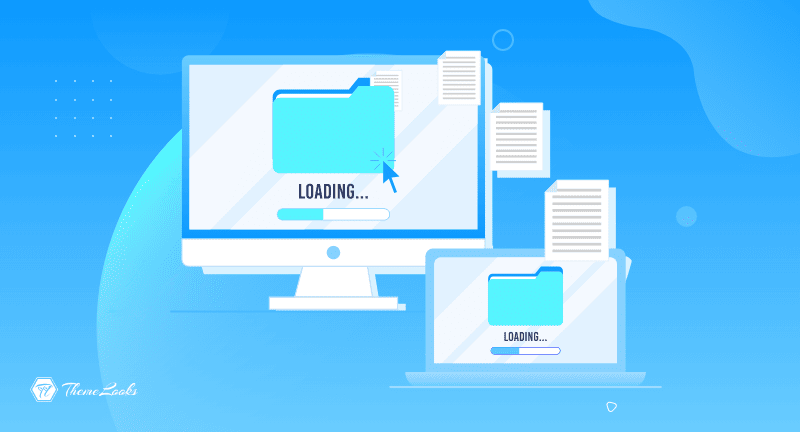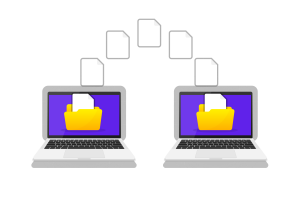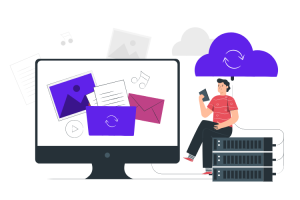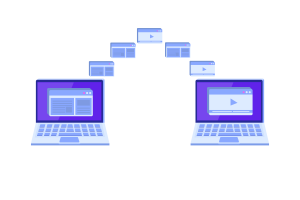
Are you looking for a perfect plan for content migration to WordPress? If so, right now, you’re in the right place.
Having an online business means your needs will grow as time goes on. There is a possibility that your current website can no longer meet your needs the way it once could. You can tell that all the hard work you have put into this endeavor is beginning to pay off.
However, your company’s success depends on having a robust and secure website. The instabilities of technology, the ongoing possibility of malfunctions and breakages, and the changing demands of your company may make finding a solution seems impossible.
Having that said, you can trust our WordPress experts to convince you that WordPress is without a doubt the best choice if you’re looking to switch your website’s content management system.
Well, you will have to focus all your attention on the content migration process. Keeping your data and applications safe is essential to prevent any damage to your digital assets.
In today’s article, we’ll provide some tips to make the migration of your content to WordPress as painless and quick as possible.
Table of Contents
The migration of information between systems is known as content migration. As if you were moving from one house to another, it is just like that. In other words, you risk losing something crucial if you do not take the time and patience to perform this process correctly.
By migrating content, you can completely revamp your website. Your information can be reorganized, written, and structured differently. A last-minute decision also carries a high risk. Preparation should begin as soon as you decide it’s time to upgrade your CMS.

It may be necessary to migrate to a different website for various reasons. Our WordPress experts believe that content migration may be the best solution for businesses that are experiencing downtime of hosting, for which their infrastructure is not meeting their digital strategy, or for the new demands for new projects.
Let’s take a look at a few reasons why companies of all sizes use WordPress before discussing how to prepare for a successful WordPress content migration:
A content management system like WordPress is undoubtedly the most popular. As previously believed, the platform can be much more than a blogging platform. Many companies are now able to use WordPress to meet their goals.
So, without any doubt, WordPress is the best solution for online presence regardless of the type of business (small to medium, or a giant one) you have right now.
Content migration, as we previously stated, is a complex process involving numerous technical considerations. So if you want to stay on top of your priorities, you should have a plan to follow.
Having that said, using WordPress experts’ experience, we will assist you with the planning process, so the whole process runs smoothly. Here we go!

We recommend defining the specific goals you hope to achieve with the migration process before you start migrating your content. Exactly what do you want – a new design, a different site structure, or a new hosting provider? Understanding why you are starting is crucial for effectively tracking your results.
Furthermore, you will be able to reach your goals more easily if you have a clear vision. Prior to making any changes to your website, it is recommended that you think about everything from the domain name to the design, the content, the host, and the site structure.
Simply put, having a clear idea of what you’re working on increases the chances of a seamless migration process.

It is recommended that you review your website’s content before migrating content. Having that said, some of the content in your system may be outdated or duplicated, and you may not need it anymore.
Please note that the categories and tags for your current and future websites may need to be renamed if they differ. Another important factor to consider is the URL structure. In order to make the URLs consistent, you may have to update them.

Keeping your data and applications protected at all times is something that our experts recommend you make a habit of. If you’re dealing with sensitive information, you don’t want to risk losing it.
It is perhaps the simplest method of backing up your stuff to use a plugin. There are several plugins in this directory that are quite useful. Generally, after installing the plugin, you’ll have to use the built-in settings to manage your backed-up files.

Having backed up your content, you can start thinking about the new look of your website. Installing WordPress and choosing a domain name is the first step.
The best way to improve your SEO score is to install the site on the same domain. You should now switch hosting providers if you’re thinking about doing so.
The next step is to plan a menu. Without it, you risk harming your search engine rankings and providing a poor user experience. To make sure that the navigation is easy to follow, our expert suggests making it simple and clear.

Content migrations often result in a drop in rankings, according to our experts. The SEO rankings may decline in the short term, but you should plan for SEO preservation if you want them to remain intact.
Write down the URLs and their meta descriptions. You will need to build a 301 redirects list to point old URLs toward the new ones. Using a tool such as SEO Spider, you can identify broken links and duplicate content in your current structure.
It is our hope that you will find the steps we walked you through today helpful in preparing for content migration. It is much easier and faster to transition to WordPress if you plan ahead. Content migration is a process that requires preparation. Our WordPress-related blog is available if you need additional professional advice.
If you’re an enthusiast of WordPress, then you may take a look at 6 Essential Reasons to Use WordPress for Your Website. And also, why you need to avoid nulled WordPress themes and plugins: 9 reasons.
If you like this post, be with ThemeLooks and subscribe to our WordPress video tutorials on YouTube. We may also be found on Twitter, LinkedIn, and Facebook.